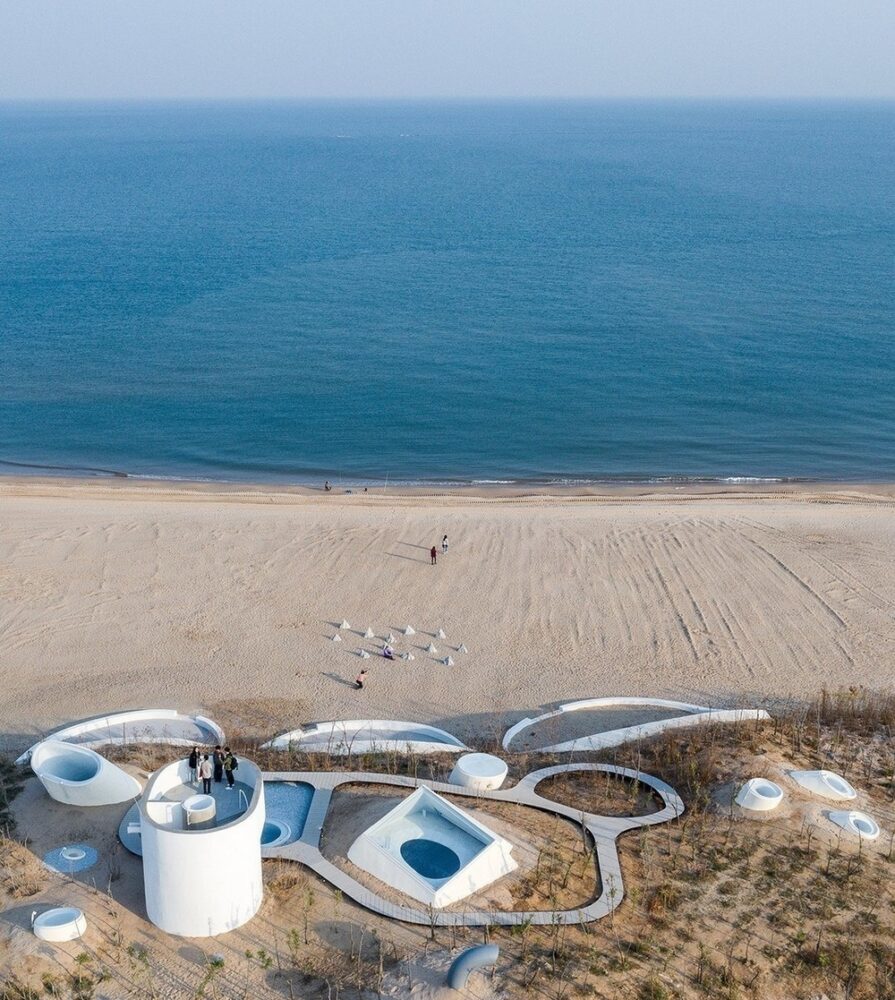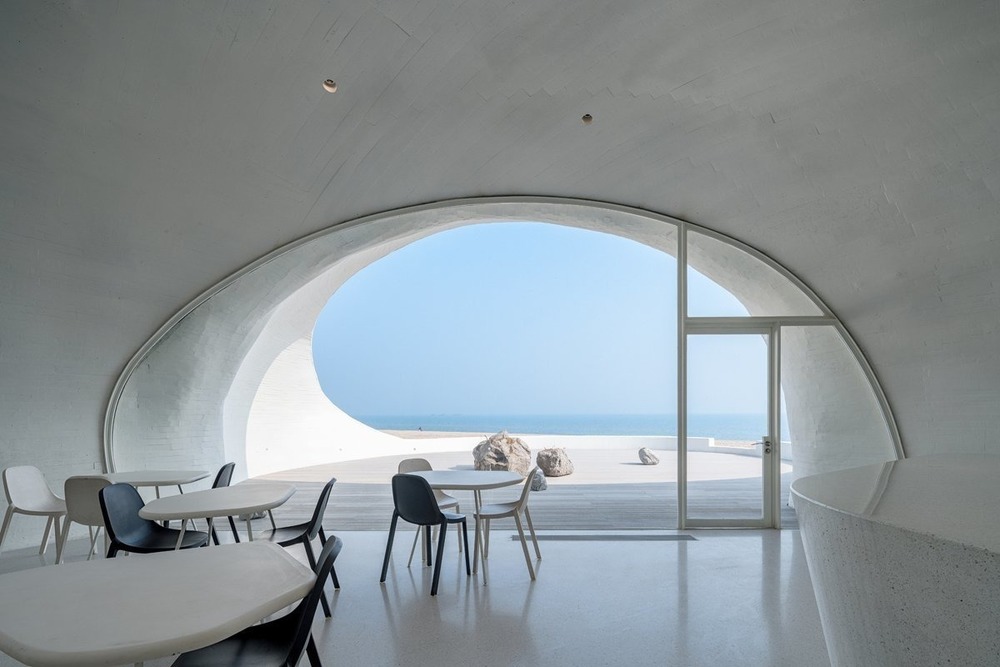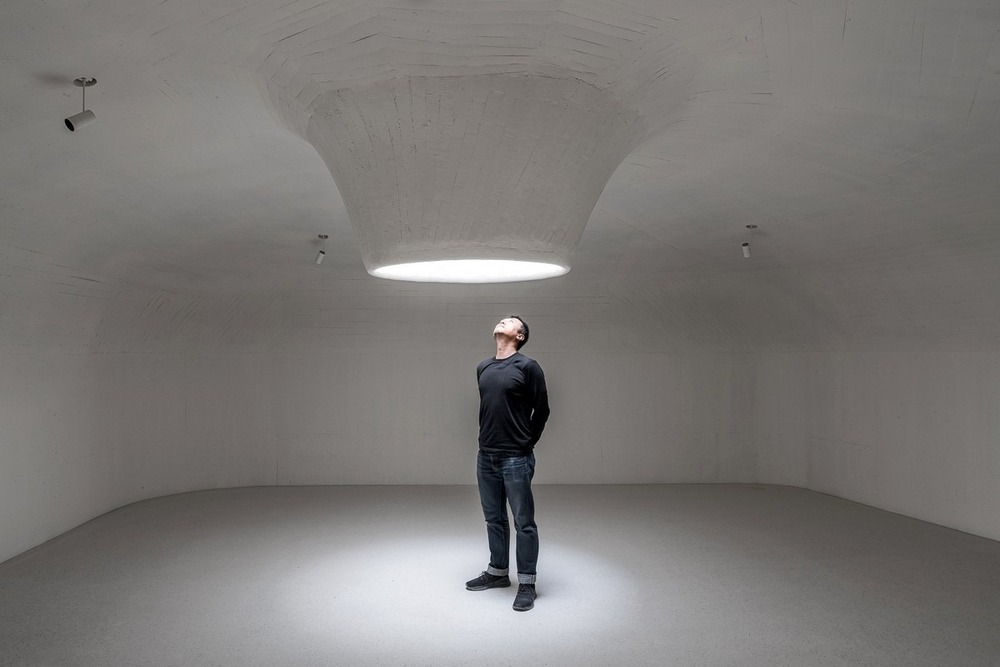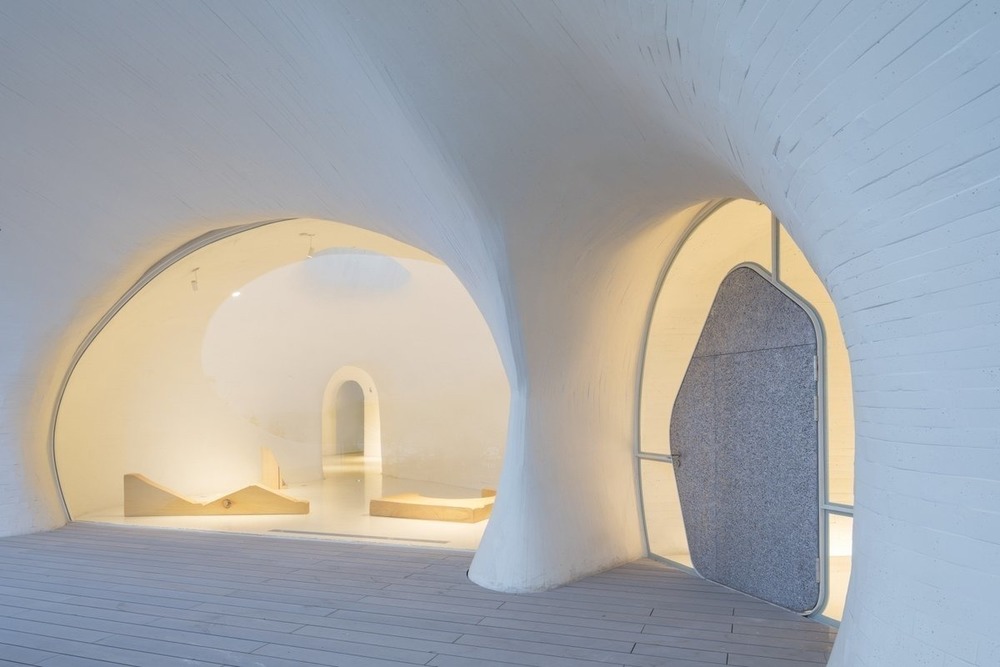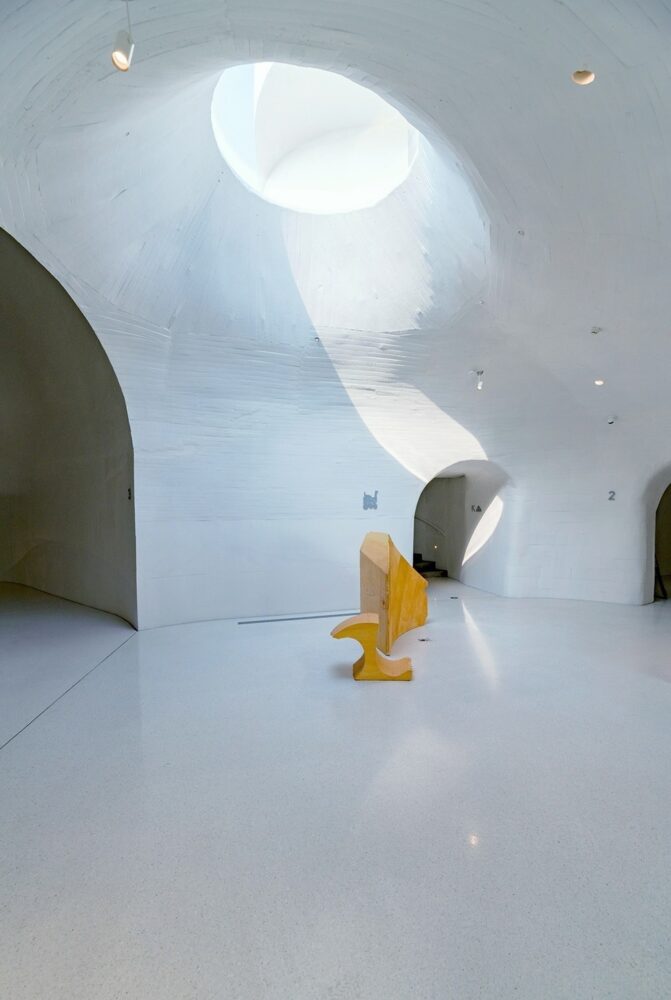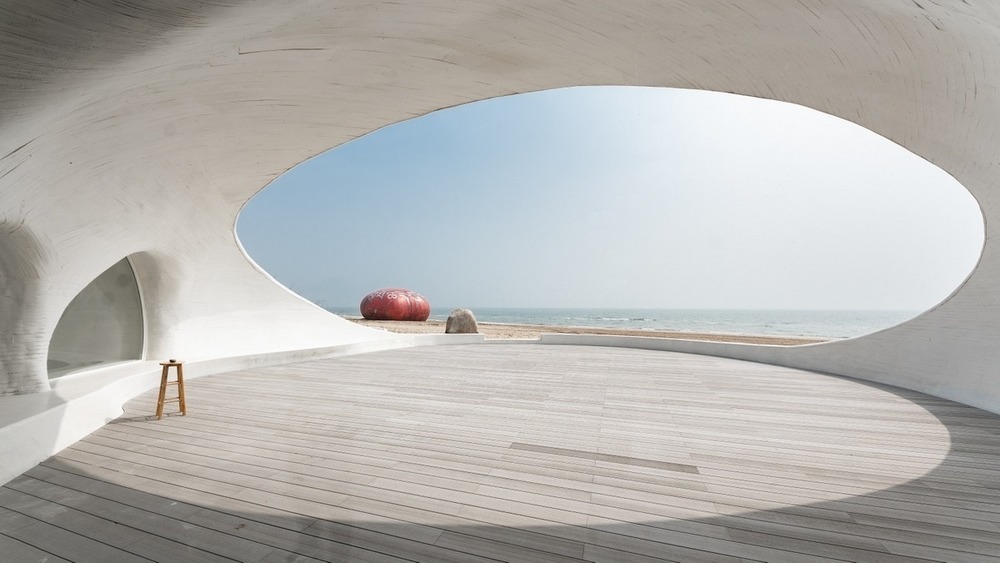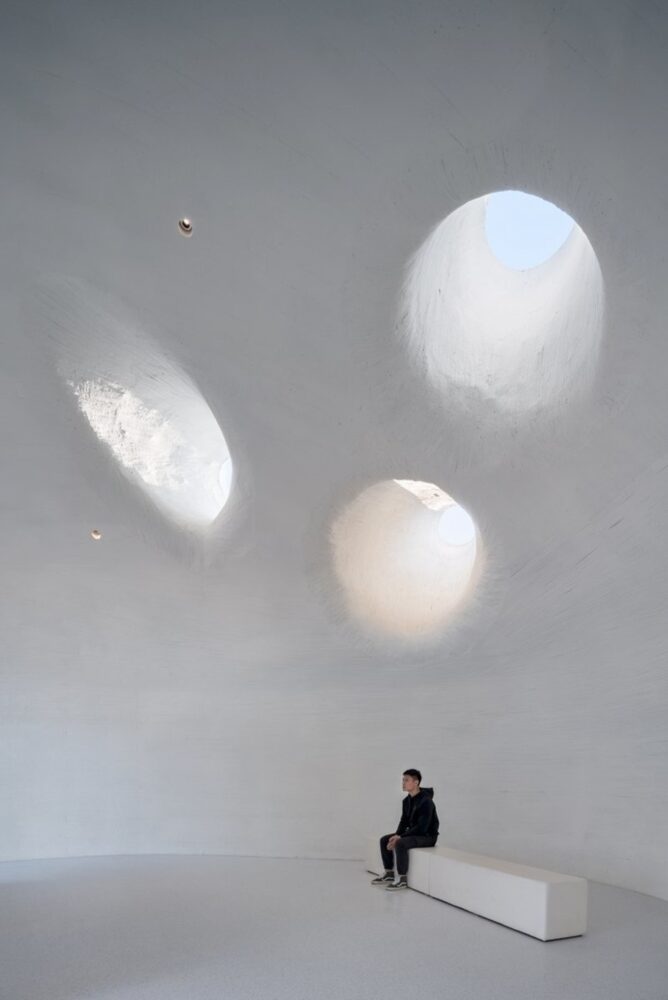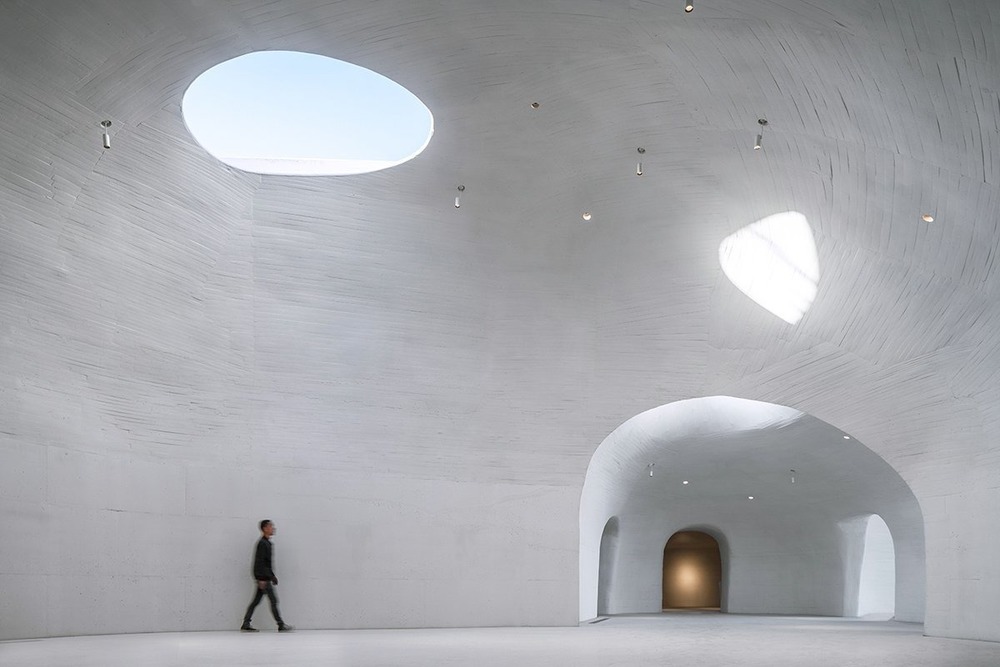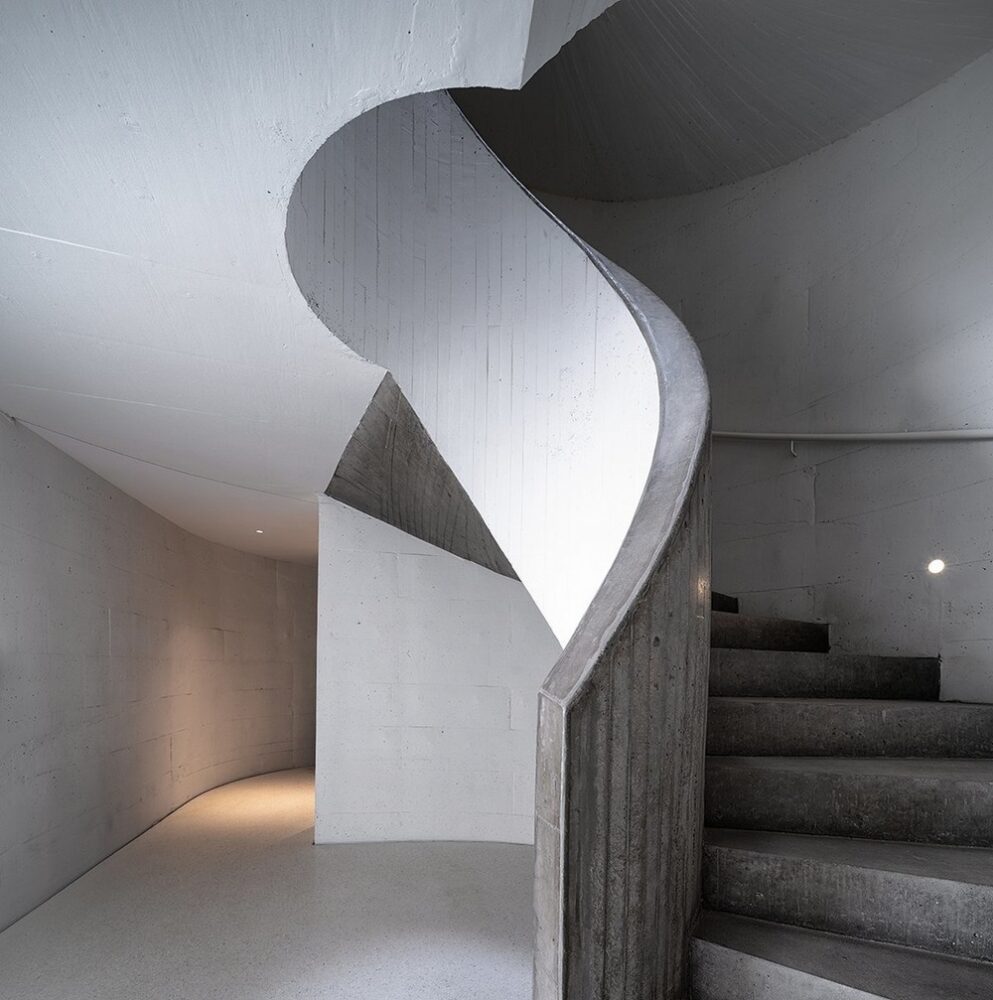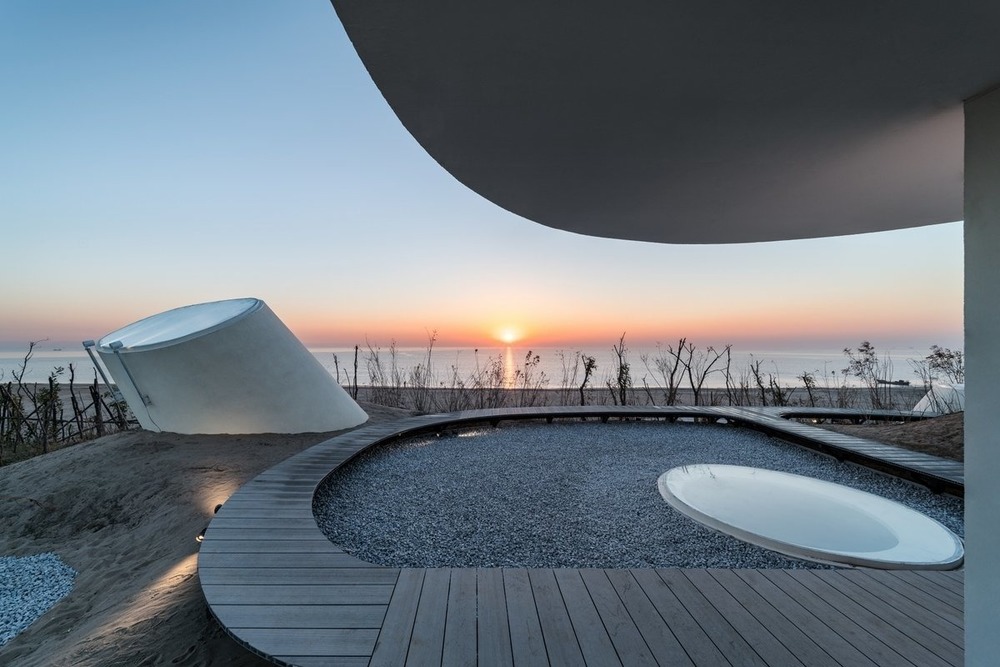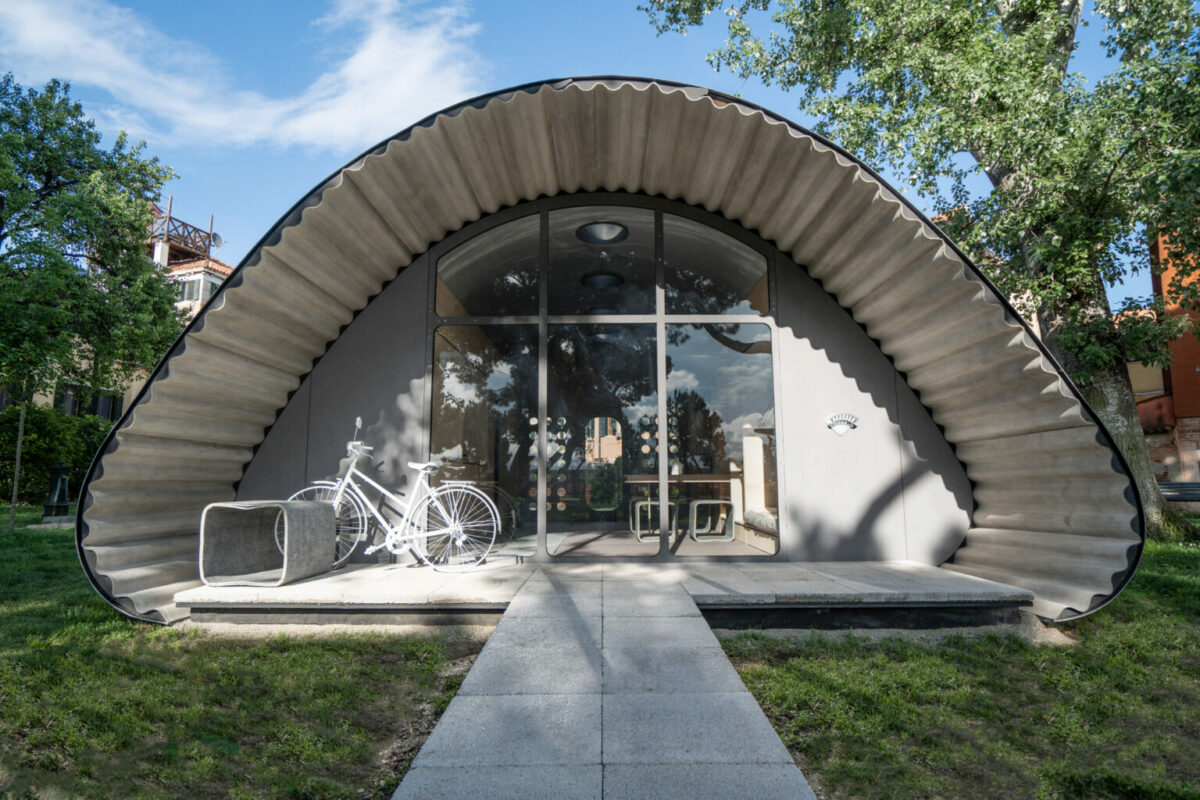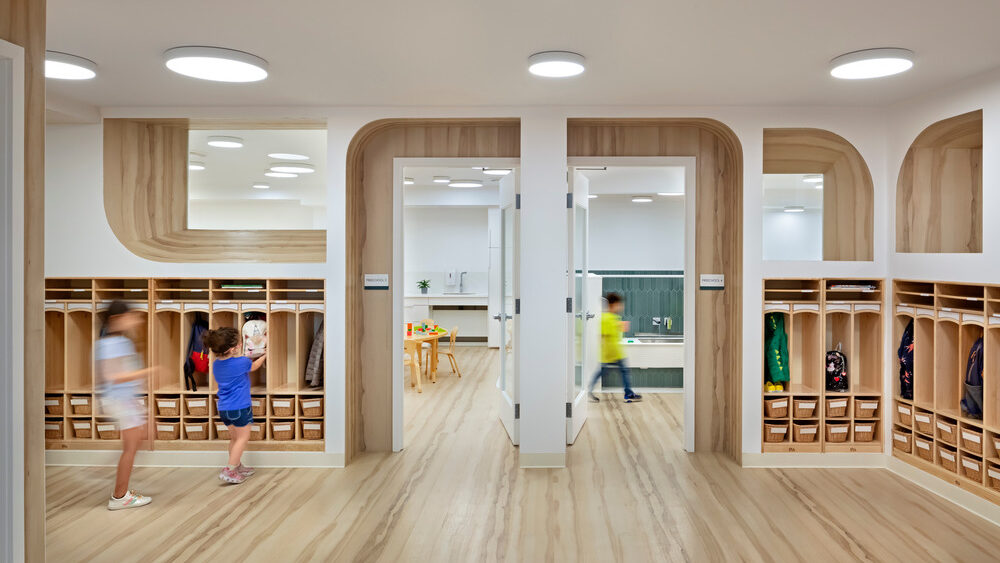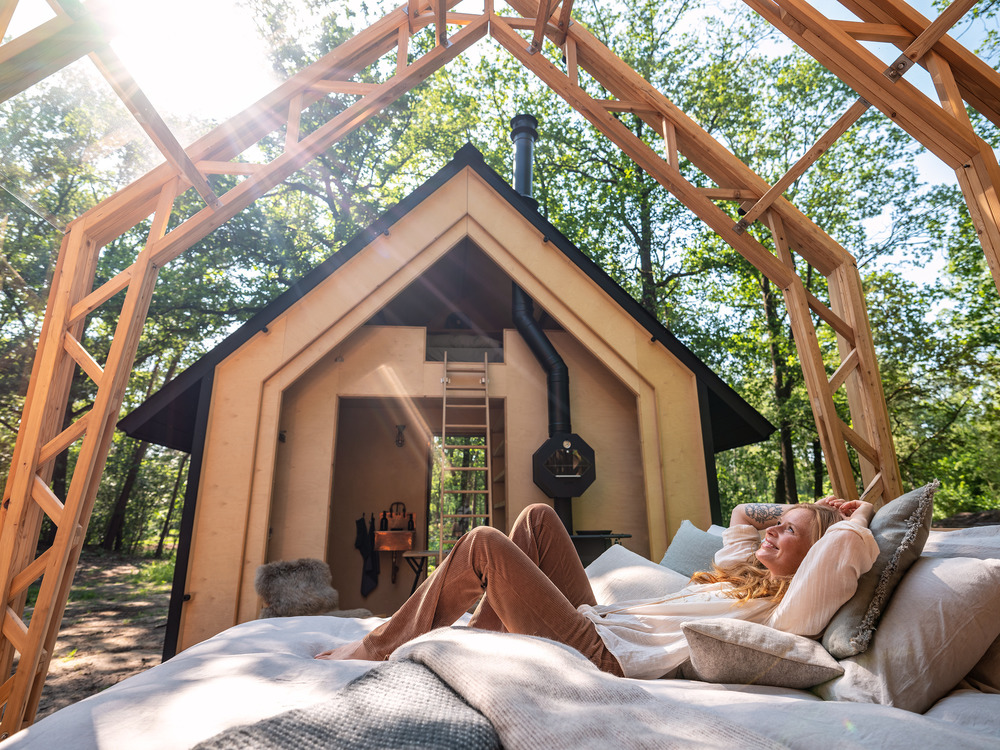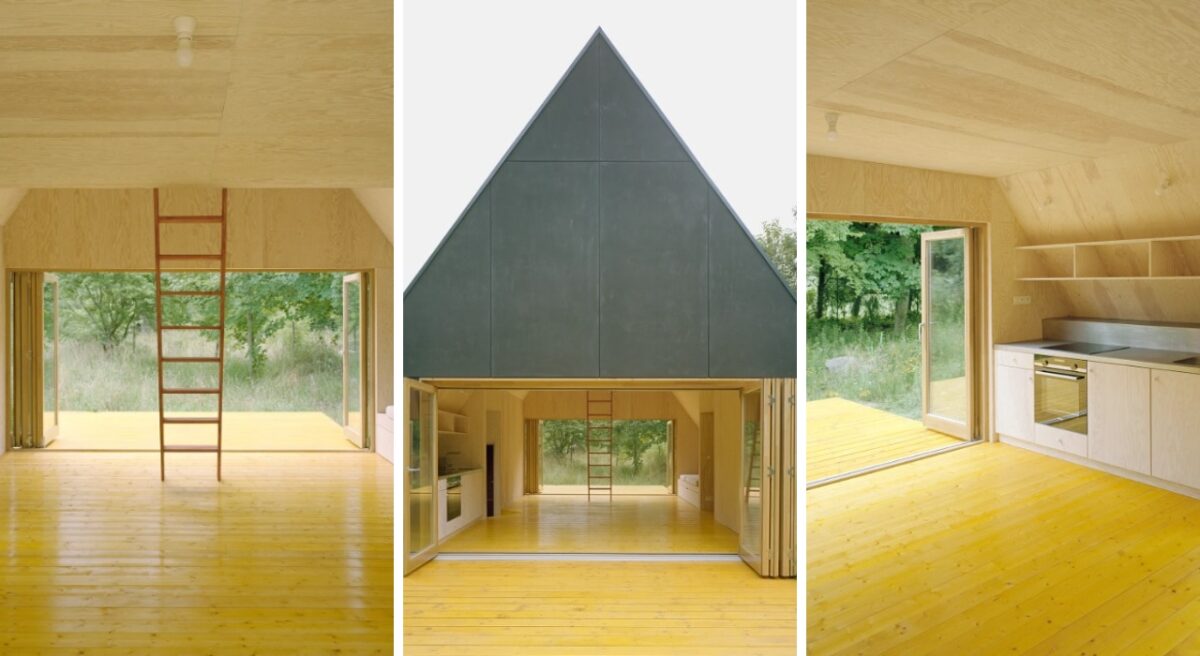Nestled along China’s Bohai Bay, a vast shoreline conceals a hidden gem waiting to be discovered beneath the sand. The UCCA Dune Art Museum stands as a stark contrast to the towering high-rise apartment buildings that dominate the surrounding beaches. This unassuming structure takes on the appearance of a series of interconnected, organically shaped spaces reminiscent of caves. Designed by OPEN Architecture with Zhou Tingting at the helm as project manager, this museum not only serves as a space for artistic preservation but also challenges the conventional rigidity of urban design.
The award-winning UCCA Dune Art Museum boasts a well-balanced layout, encompassing a reception area, a cafe, a community room, exhibition spaces, an outdoor exhibition area, and a roof terrace. Spanning 930 square meters, the structure has been ingeniously crafted within a dune, shaped by the natural forces of wind over time. To access the museum, visitors traverse a walkway seemingly carved out of the sand above, leading them into an interior adorned with a concrete shell meticulously crafted by local artisans in Qinhuangdao. Some of these skilled craftsmen were former shipbuilders, utilizing formwork constructed from small wooden strips.
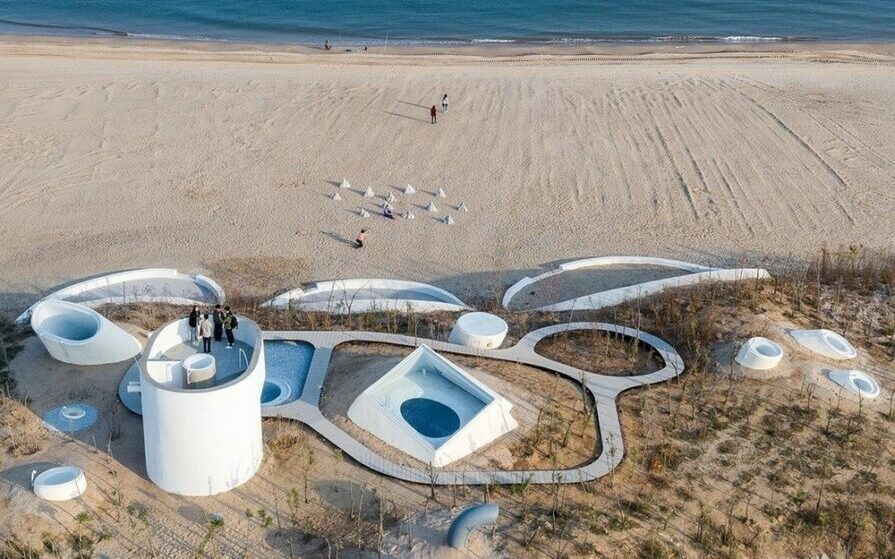
To navigate the intricate curves of the architecture, more flexible materials were employed. Particularly striking within the interior is the irregular texture of the concrete shell deliberately retained by the architect, allowing traces of the building’s construction to remain visible and tangible. This intentional design choice fosters a sense of intimacy between the visitor and the space, encapsulating the essence of the project.
The UCCA Dune Art Museum embodies a new architectural concept emerging in China, one that embraces starting from a clean slate. By harmonizing with the complexities of natural elements and materials and integrating them into communal spaces like art galleries, this approach signifies a departure from mere demolition and instead emphasizes learning from and building upon existing environments.
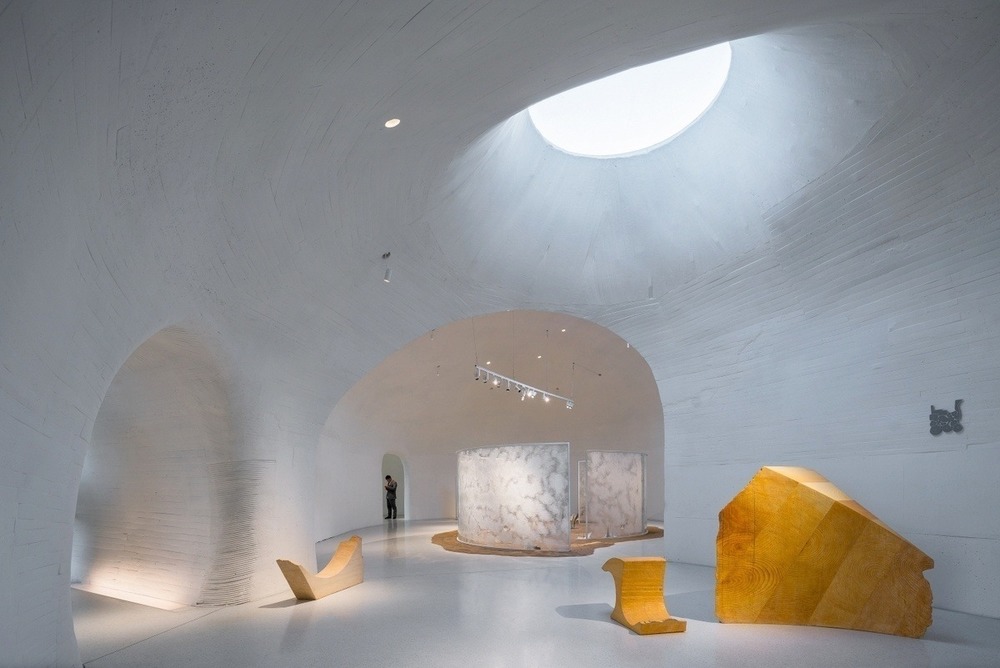
Beneath the surface, ten interconnected galleries and a cafe unfold, their organic shapes mirroring the walls of ancient caves where artistry first flourished. Embracing a dedication to handcrafted elements wherever feasible, the museum features custom-designed and onsite-crafted doors, windows, reception desks, bar counters, and bathroom sinks. Skylights punctuate various rooms, each offering a unique orientation and size, beckoning visitors to look above and contemplate the world beyond.
Incorporating sustainable design practices, the museum employs a ground source heat pump system that supplants traditional air conditioning, promoting energy efficiency and zero emissions. The sand-covered roof serves as a clever tactic to reduce the building’s summer heat absorption, especially in a region where temperatures can soar up to thirty degrees Celsius (86 degrees Fahrenheit). Seamlessly blending into the dune landscape, the rooftop provides a discreet vantage point, offering a modest ocean view that contrasts with the more ostentatious views from the adjacent ocean-view apartment buildings.
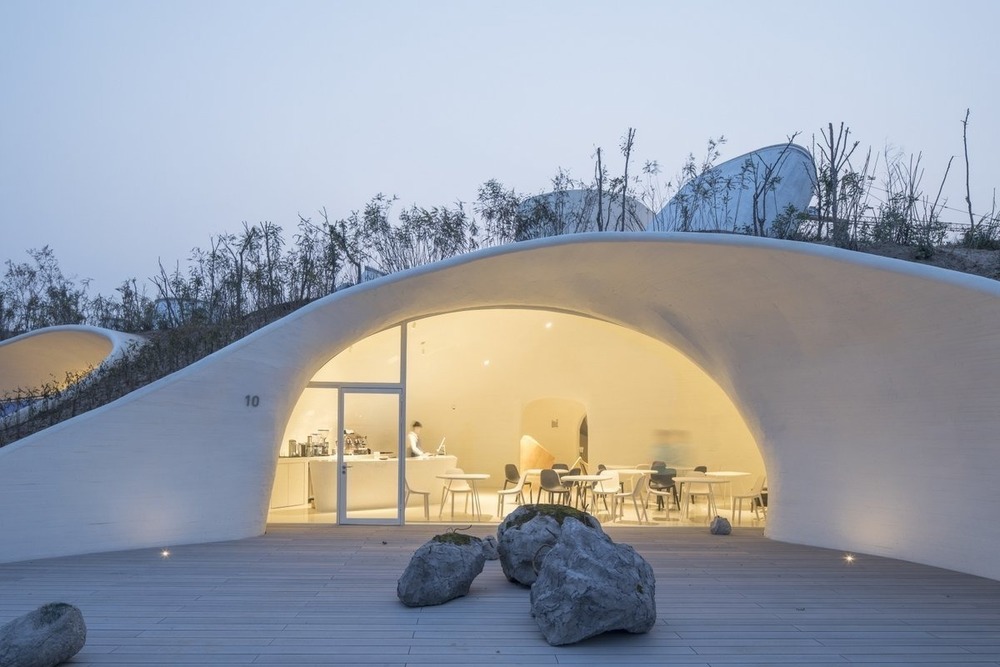
Presently, the museum is showcasing an exhibition titled ‘The Rearview Landscape, or a Trip of Ownership,’ featuring works by nine artists that prompt a reevaluation of our perception of landscape as a medium. Through various artistic lenses, the exhibition invites contemplation on the intricate relationships between humans and nature, the self and the world.
In many ways, this exhibition encapsulates the overarching ethos of the museum. It challenges viewers to reconsider the notion of separation between humanity and the environment we inhabit. In reality, our relationship with the natural world is one of interdependence, a concept that should ideally be reflected in our design and architectural endeavors. The UCCA Dune Art Museum stands as a testament to the harmonious coexistence of human creativity within the dynamic forces of nature, striking a delicate equilibrium between what is constructed and what is intrinsic.
